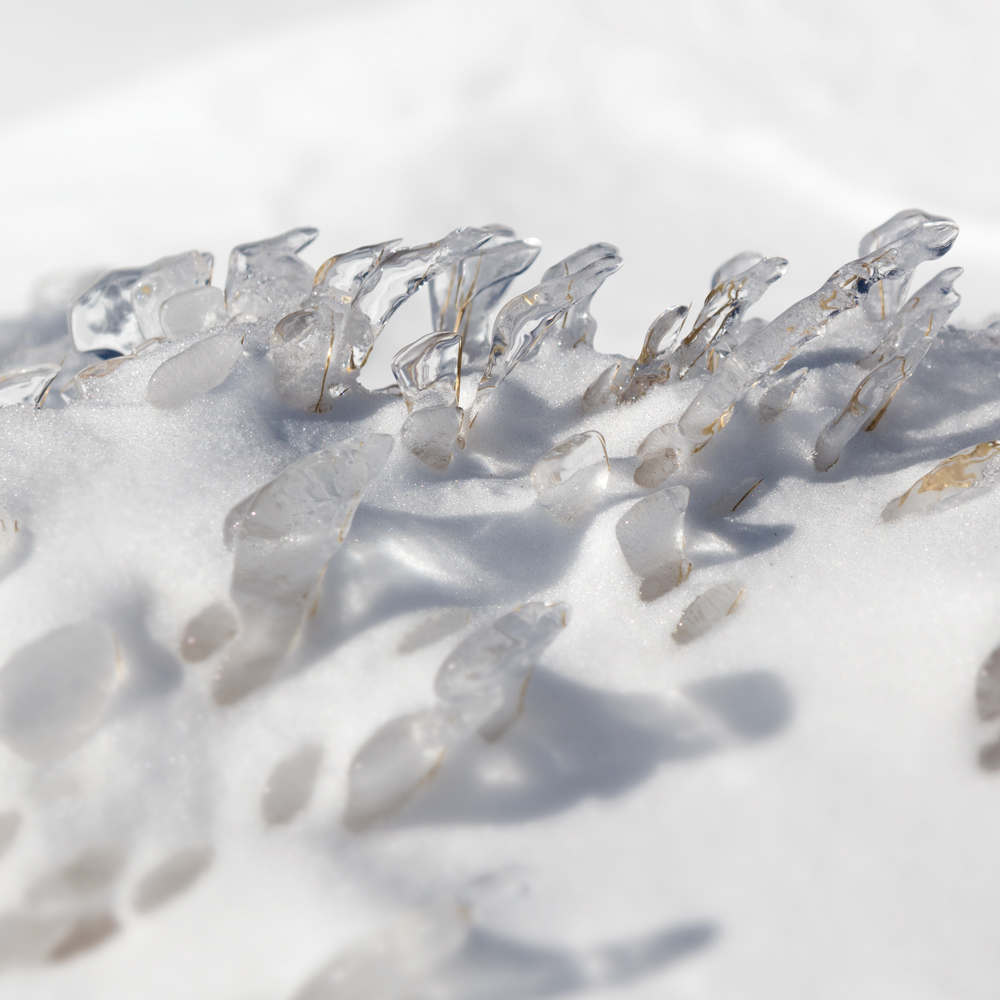ver·glas | /(ˈ)ver¦glä/

Verglas is the smooth, transparent ice sometimes seen entombing foliage or coating exposed rocks during winter in temperate climes. It’s a loan word stemming from the Old French verre-glaz, meaning glass ice. This in turn derives from the Latin vitrum for glass and glacia for ice. Counter-intuitively for English speakers, the ‘ver’ is the glass component rather than the ‘glas’.
Verglas (also known as glaze ice, glazed frost, and simply glaze) is bewitchingly beautiful but can also be treacherous. For climbers, the dangers of ice-varnished rocks are obvious. On roads, verglas is commonly known as clear or black ice and is effectively invisible. Lurking in depressions and shaded patches, it’s notorious for causing sudden and complete loss of traction. On shipping and aircraft, it may catastrophically increase weight. Likewise, thick coatings can bring down large branches and electrical infrastructure.
Verglas is harder and clearer than either rime or hoarfrost. It forms when supercooled rain, fog, or condensing water vapour freezes on contact with exposed surfaces. It may also form around ice particles in the atmosphere – normal hailstones are almost entirely composed of verglas.
In the image on the right, verglas bejewels the tips of tussock standing proud of fresh fallen snow.
Introduction Aeolian Alpenglow
Benthos Crepuscular Crispate Crown shyness
Desire lines Dreich Endragoned Edgelands
Frondescence Fumarole Gluggaveður Gossamer
Karst Komorebi Lawrence Long acre
Machair Monkey’s wedding Moonglade
Psithurism Quartz Rakuyou Roaring forties
Snag Soft estate Specular, diffuse and pellucid
Spoondrift Steam fog Swash zone Sylvan
Tellurian and thalassic Terracettes Uliginous